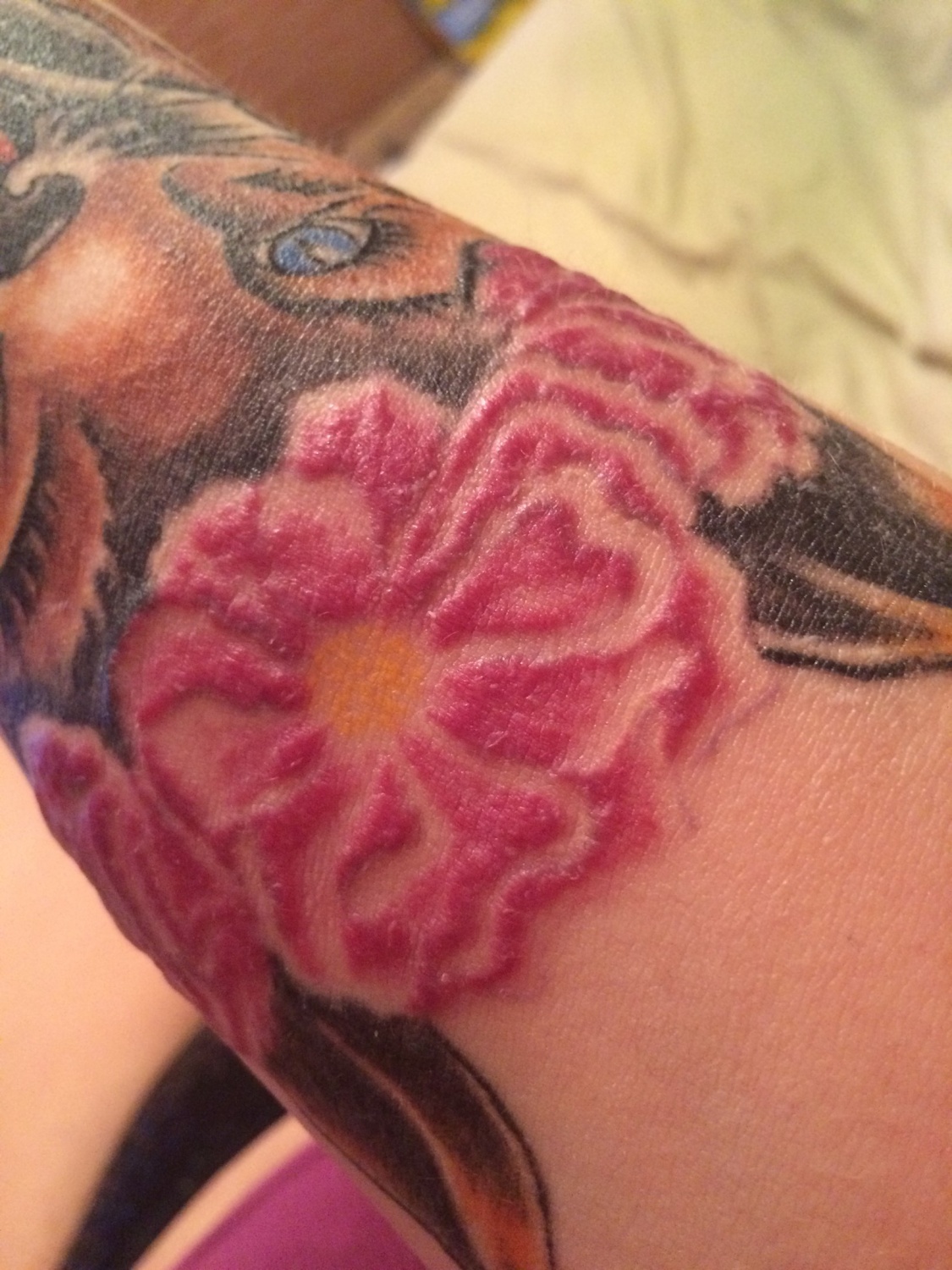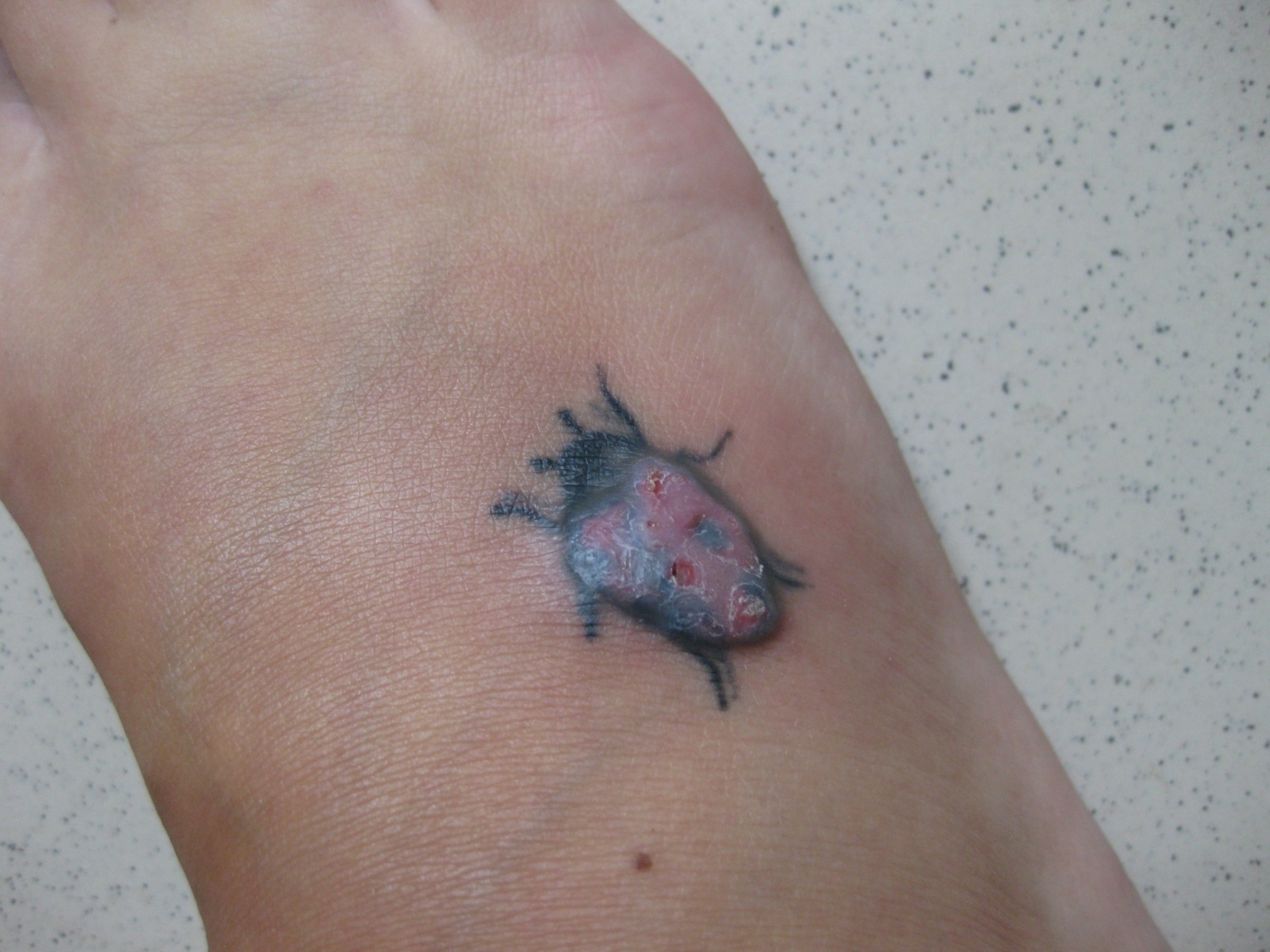Mastering the Mini Tattoo: Allergic Reaction to Tattoo Ink
Note to the master of permanent makeup

The demand for mini tattoos is increasing and so are the risks of allergies. This article will help permanent makeup artists to be prepared for such unexpected and dangerous reactions.
Alina Alexandrova, certified master expert of the national level Brow Artist, make-up artist (experience ⎼ more than 10 years), linergist, technologist-methodologist of the SHleyf training center, teacher of the author's course on manual tattoo techniques fast and easy, point tip, "Eyebrow correction 6D, work on mistakes”, judge of the 3rd and 5th open international competition Luxury Lashes & brows (2015⎼2016), judge of the First open championship of Ukraine Brow Pro (2016), judge of the 2nd open international championship Beauty WEST (2016), speaker of the forum "Eyebrow from A to Z" (2016), judge of the championship Brow Expert (2017), judge of the international championship Microbleding and brow design (Moldova, Chisinau, 2017), speaker of the Scientific and Practical Conference on Permanent Makeup (Kiev, 2017)
About the mini-tattoo fashion and the fact that it can become a fresh “sip” and a new level of creativity for permanent makeup artists, I already wrote in the material. “ Mini-tattoo: new horizons for permanent makeup artists ”. Continuing the topic, I want to discuss a topical issue, as the demand for tattoos is increasing and the risks of allergies are also increasing. I am sure this article will help the masters to be prepared for such unexpected and dangerous reactions.
Most people who have an allergic reaction to tattoo ink have reactions predominantly to reds and yellows, but only 0.5% of the population is affected. However, they say that it's not the color paints themselves - problems appear when mixing colors. Metal-rich inks may not be suitable for use on leather. In some cases, allergies occur precisely for this reason.
Some tattoo inks contain mercury, but the use of these types of ink has declined significantly in recent years. The elements that cause an allergic reaction are nickel, cadmium and chromium. These substances are sometimes found in the metals that make up jewelry, so if you've ever had an allergic reaction to jewelry, be careful.
An allergy to a tattoo may not occur immediately, but on the third procedure or a year later. If an adverse reaction appears so late, only after a year, there will be a characteristic reaction - itching of the skin. There may also be a reaction to weather conditions. If you feel itchy at the site of the tattoo in hot weather, then this may be due to an allergy to the ink when it is heated.
Symptoms to see a doctor:
- the appearance of redness around the tattoo, itching and burning, accompanied by pain;
- urticaria, rash, blisters;
- temperature increase;
- difficulty breathing - swelling of the throat.
An allergy to a pigment containing paraphenylenediamine may appear a month or even a year after the procedure. Hot weather can provoke a reaction, when the dye under the skin heats up and changes its structure.
Visually, allergies are determined by the swelling of the skin, which does not subside during the healing period, but only increases. Blisters and scabs may appear. Lack of timely treatment increases the risk of infection. In severe forms, the allergy disappears with laryngeal edema, angioedema. In addition to local inflammation, tearing, pain in the eyes, allergic cough, runny nose may develop.
Causes
The main provoking factor is a dye, especially containing mercury.
If the master violates the proportions of the components or uses expired ink, an allergy may occur to the tattoo ink. To avoid this, you should contact well-known salons, where qualified craftsmen strictly observe the dye mixing technology and application technique, use high-quality pigments.
Dye compositions:
- yellow - turmeric, cadmium sulfide, chromium oxide;
- red - mercury sulfide, iron hydrate;
- brown - ocher, iron oxide;
- black - iron oxide;
- blue - cobalt aluminate;
- green - chromium oxide, lead chromate.
Allergies can develop to red, yellow and purple dyes containing mercury, chromium and cadmium. Black pigments with paraphenylenediamine are also toxic.
If a person is prone to allergic diseases (reaction to animals, dust, pollen, asthma), there is a risk of developing an allergy to anesthesia performed before the procedure.
In order not to provoke an allergy, after applying a tattoo, you should exclude being in the open sun and swimming in salt water until the skin heals.
Treatment
If symptoms appear, contact a dermatologist who will do skin tests and refer you for tests to determine the allergen, and conduct a provocative test. Antihistamines tavegil, cetrin, zodak, erius, loratadine are used - in the form of tablets, drops, syrups. Intramuscular injections may be given. To eliminate local symptoms, creams and ointments hisstan, fenistil, solcoseryl are used, glucocorticosteroids prednisolone, elocom, hydrocortisone are used. To prevent infection, the skin is treated with antifungal and antibacterial agents, such as chloramphenicol, oxycort in the form of an aerosol, fucidin in the form of a cream.
How to check the possibility of allergies in advance?
Test for an allergic reaction by applying a small amount of pigment to the skin. It is necessary to observe the skin area for up to 3-4 weeks.
Study the composition of the paint.
Get a tattoo from a professional artist to be sure that the specialist complies with the requirements of sterility and uses quality formulations. Then the risk of allergies will be minimized.
Read also
- Working with a male face, or Why does he need permanent makeup?
- In the zone of special attention: men's permanent makeup
- Eyebrows in the technique of spraying: a master class from Irina Tkachuk
- PM of the periorbital region: advice from Anna Zabolotnaya
- Correction of the periorbital zone with the help of PM: expert advice
- Arrow shapes in permanent eyelid makeup
- The history of tattoo art: the development of the salon business
- Medical vs art education: what is the main thing for a PM master?
- Cosmetic masks: where to start?

